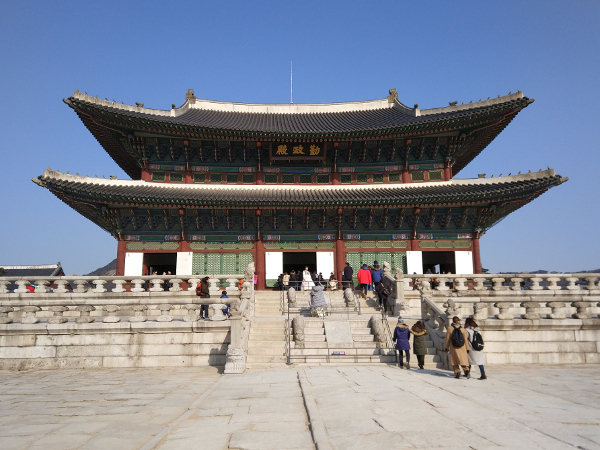Korean Lessons ᚛ Level 1 - My First Steps in Korean (Lessons 1 to 30) ᚛ Lesson 30 - The place particle with action [에서]
The place particle with action [에서]
In the previous chapter, we learned how to use the 에 particle to mark a place. However, it could only be used when talking about:
- a destination towards which we are heading
- the presence or absence of something or someone, without describing any particular action
- an action performed on a specific object
The particle 에서, on the other hand, indicates a place in which an action takes place.
Expressing a place with action
The particle 에서 makes it clear that something is happening in a specific place. By using the particle 에서, we expect to find an action verb at the end of the sentence.
집에서 방 청소해.
→ I clean my room at home.
부엌에서 핸드폰을 떨어트렸습니다.
→ I dropped my phone in the kitchen.
발리에서 서핑을 배울 거예요.
→ I'm going to learn to surf in Bali.
매일 공원에서 산책을 했습니다.
→ I walked in the park every day.
저는 프랑스에서 태어났습니다.
→ I was born in France.
Differences between 에 and 에서
It is necessary to distinguish between 에 and 에서 which describe two different things:
- If we indicate a destination with a verb of movement (to go, to return, to go up… etc), we use 에.
- If we indicate a place and simply describe the presence (있다) or absence (없다) of something or someone, we use 에.
- If we indicate a place and we describe an action (eating, doing, studying, playing, speaking... etc.), we use 에서.
에서 is literally the particle for "a place in which something happens".
Note: the verb 살다 (= to live) can be used with both particles, but 에서 will create emphasis on where you live.
저는 서울에 살아요. /
저는 서울에서 살아요.
→ I live in Seoul.
Combination of particles
Learn more
Exercises
Learn more
You already know some vocabulary and sentence structures… But when you listen to Koreans speak, do you ever feel like something is missing, the meaning behind the words, the cultural nuance that makes the language truly come alive?
That’s completely normal. In Korean, proverbs and idiomatic expressions are essential to understanding how Koreans think and communicate. Without them, you can speak, but your language will feel flat and overly literal.
With 100 Korean Proverbs - Illustrated and Explained, you’ll understand not only what Koreans say, but why they say it, and what each expression reveals about their mindset and culture.
Learn more

